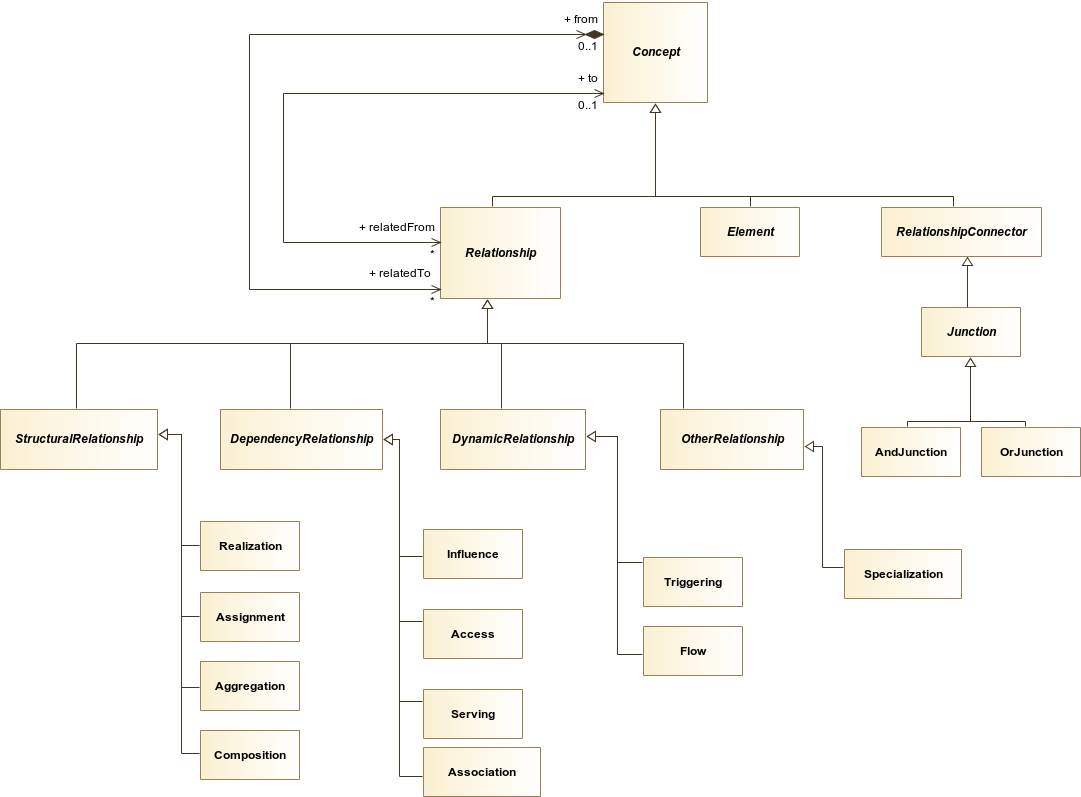
ArchiMate Metamodel
In addition to the generic elements, the ArchiMate language defines a core set of generic relationships, each of which can connect a predefined set of source and target concepts (in most cases elements, but in a few cases also other relationships).
Many of these relationships are 'overloaded'; i.e., their exact meaning differs depending on the source and destination concepts that they connect.
The relationships are classified as follows :
- Structural relationships, which model the static construction or composition of concepts of the same or different types
- Dependency relationships, which model how elements are used to support other elements
- Dynamic relationships, which are used to model behavioral dependencies between elements
- Other relationships, which do not fall into one of the above categories


This figure shows that each relationship has exactly one 'from' and one 'to' concept (element or relationship) as endpoints. It does not show which types of concepts are permitted as endpoints.
For the sake of readability, the metamodel figures throughout this document do not show all possible relationships in the language.
Aggregation, composition, and specialization relationships are always permitted between two elements of the same type, and association is always allowed between any two elements, and between any element and relationship.
Package | Summary |
|---|---|
Relationships that do not fall into one of the other categories. | |
Structural relationships |